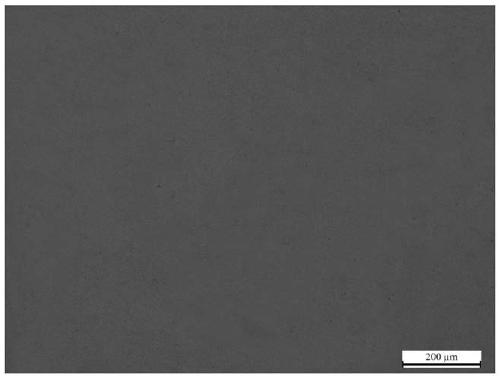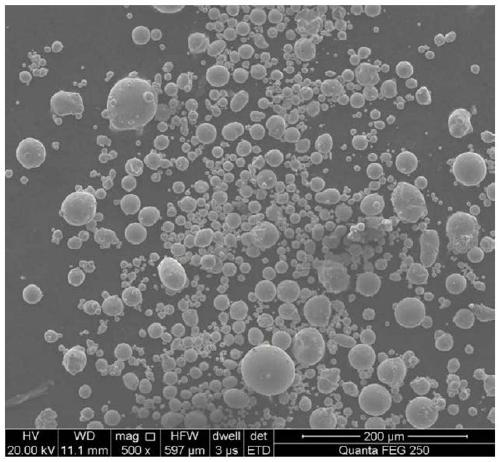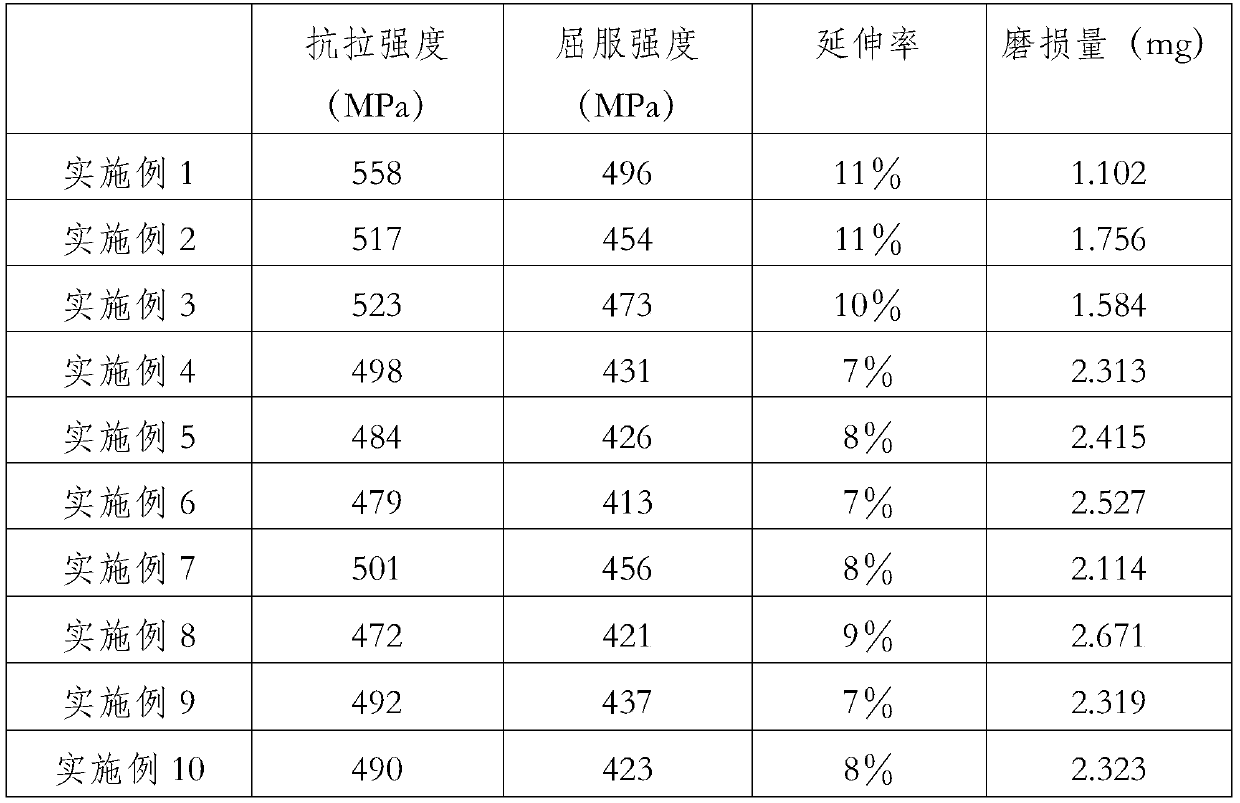3D printing aluminum lithium alloy, preparing method of 3D printing aluminum lithium alloy and part printing method of 3D printing aluminum lithium alloy
A technology of 3D printing and printing aluminum, which is applied in the direction of additive processing, etc., can solve the problems of low strength, cracks caused by aluminum-lithium alloy, and low density, and achieve the effect of smooth surface, improved strength, plastic toughness, and high density
- Summary
- Abstract
- Description
- Claims
- Application Information
AI Technical Summary
Problems solved by technology
Method used
Image
Examples
Embodiment 1
[0027] The weight percentage of each component of the 3D printing aluminum-lithium alloy powder is: Li: 1.1%; Cu: 3.7%; Mg: 0.6%; Ag: 0.4%; Cr: 0.08%; Zr: 0.3%; Y: 0.10%; Er Sc: 0.3%; Ru: 0.05%; Ti: 0.8%, the balance being Al and unavoidable impurities.
[0028] Preparation method of aluminum-lithium alloy:
[0029] (1) Powder preparation: The 3D printed aluminum-lithium alloy powders are mixed and vacuum smelted, and the aluminum-lithium alloy powders are obtained by gas atomization: the temperature of vacuum smelting is 750°C, and the pressure in the melting furnace is 0.5MPa; atomization The pressure is 4.5MPa, and argon is used as a protective gas to prevent the powder from being oxidized during the atomization process, then dried and sieved, the mesh number of the sieve is 270 mesh, and the prepared alloy powder is spherical (see figure 2 ).
[0030] (2) The sieved alloy powder was placed in an argon atmosphere, and kept at 320° C. for 2.5 hours.
[0031] Pour the alu...
Embodiment 2
[0035] The weight percentage of each component of the 3D printing aluminum-lithium alloy powder is: Li: 0.5%; Cu: 2.5%; Mg: 0.3%; Ag: 0.2%; Cr: 0.06%; Zr: 0.1%; Y: 0.08%; Er Sc: 0.1%; Ru: 0.02%; Ti: 0.1%, the balance being Al and unavoidable impurities.
[0036] Preparation method of aluminum-lithium alloy:
[0037] (1) After mixing the 3D printed aluminum-lithium alloy powders, carry out vacuum smelting, and use the gas atomization method to obtain aluminum-lithium alloy powders: the temperature of vacuum smelting is 750 ° C, the air pressure in the melting furnace is 0.5 MPa; the atomization pressure is 4.5 MPa, argon is used as a protective gas during the atomization process to prevent the powder from being oxidized.
[0038] (2) The prepared alloy powder is spherical, and the mesh of the screen is 270 mesh.
[0039] (3) The sieved alloy powder is placed in an argon atmosphere, and kept at a temperature below 320° C. for 2.5 hours.
[0040] Pour the aluminum-lithium allo...
Embodiment 3
[0042] The weight percentage of each component of the 3D printing aluminum-lithium alloy powder is: Li: 2.0%; Cu: 5.0%; Mg: 1.2%; Ag: 0.8%; Cr: 0.1%; Zr: 0.5%; Y: 0.14%; Er Sc: 0.5%; Ru: 0.08%; Ti: 1.5%, the balance being Al and unavoidable impurities.
[0043] Preparation method of aluminum-lithium alloy:
[0044] (1) After mixing the 3D printed aluminum-lithium alloy powders, carry out vacuum smelting, and use the gas atomization method to obtain aluminum-lithium alloy powders: the temperature of vacuum smelting is 750 ° C, the air pressure in the melting furnace is 0.5 MPa; the atomization pressure is 4.5 MPa, argon is used as a protective gas during the atomization process to prevent the powder from being oxidized.
[0045] (2) The prepared alloy powder is spherical, and the mesh of the screen is 270 mesh.
[0046] (3) The sieved alloy powder is placed in an argon atmosphere, and kept at a temperature below 320° C. for 2.5 hours.
[0047] Pour the aluminum-lithium alloy...
PUM
| Property | Measurement | Unit |
|---|---|---|
| tensile strength | aaaaa | aaaaa |
| yield strength | aaaaa | aaaaa |
| tensile strength | aaaaa | aaaaa |
Abstract
Description
Claims
Application Information
 Login to View More
Login to View More - R&D
- Intellectual Property
- Life Sciences
- Materials
- Tech Scout
- Unparalleled Data Quality
- Higher Quality Content
- 60% Fewer Hallucinations
Browse by: Latest US Patents, China's latest patents, Technical Efficacy Thesaurus, Application Domain, Technology Topic, Popular Technical Reports.
© 2025 PatSnap. All rights reserved.Legal|Privacy policy|Modern Slavery Act Transparency Statement|Sitemap|About US| Contact US: help@patsnap.com



